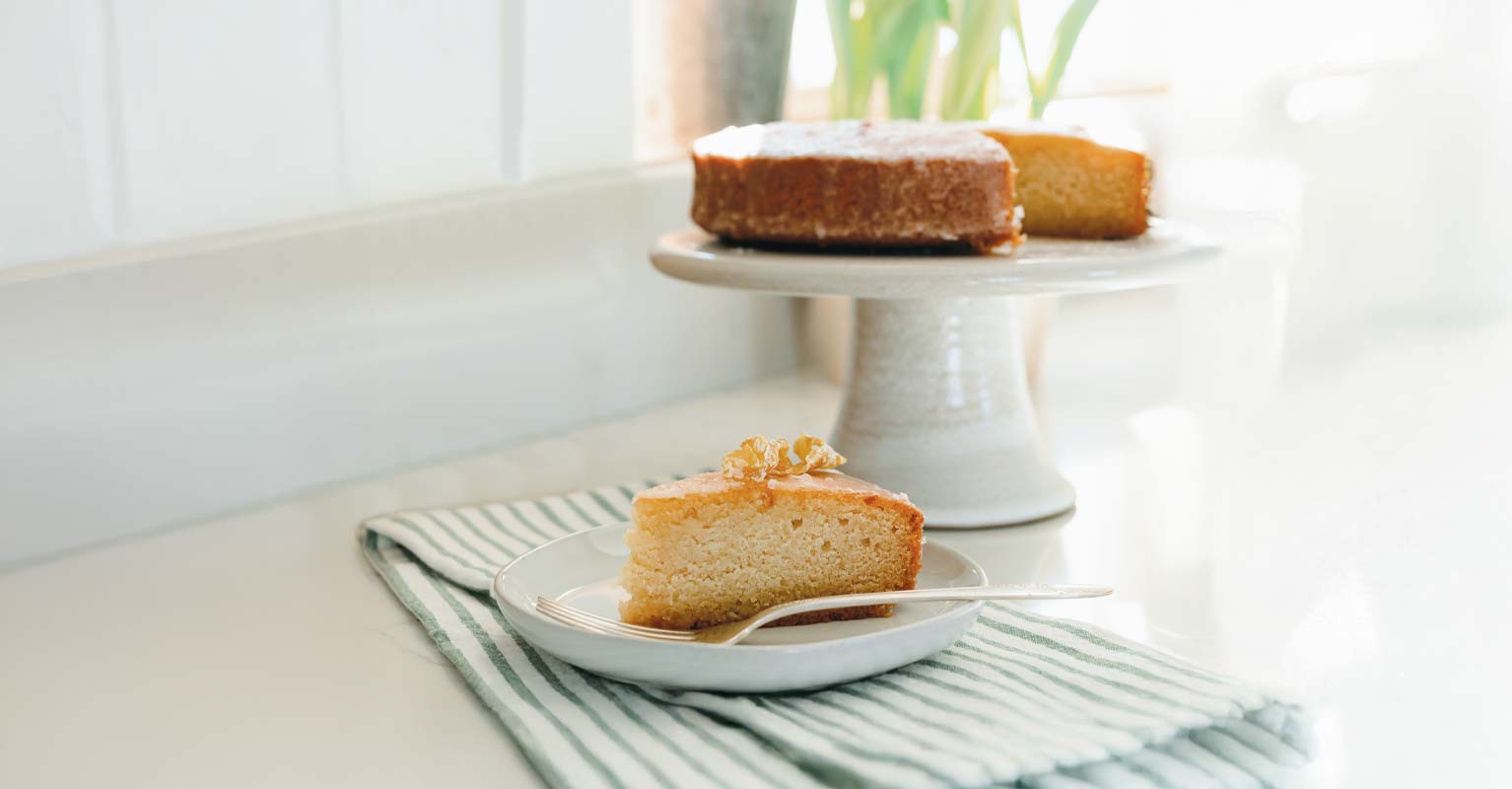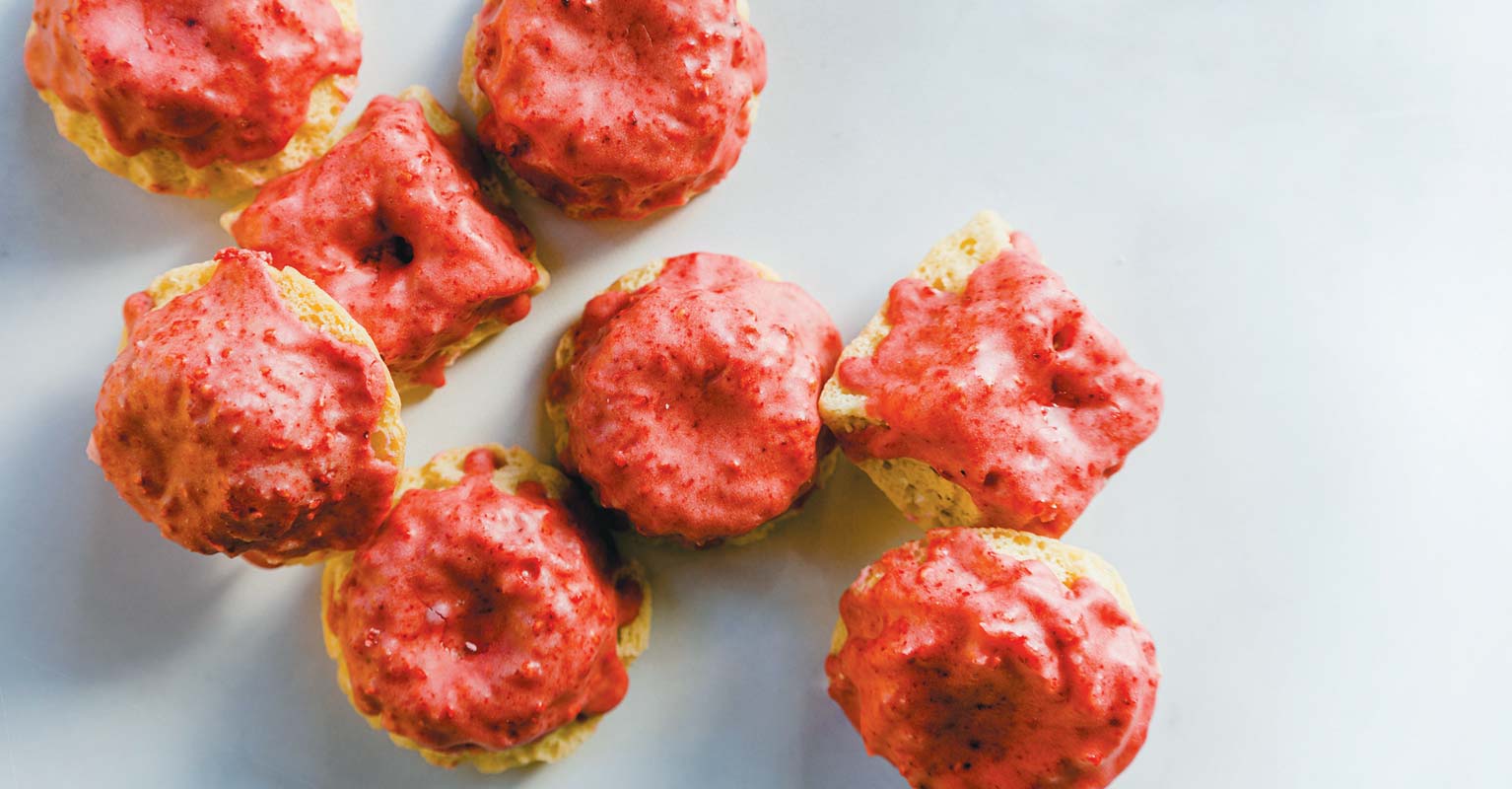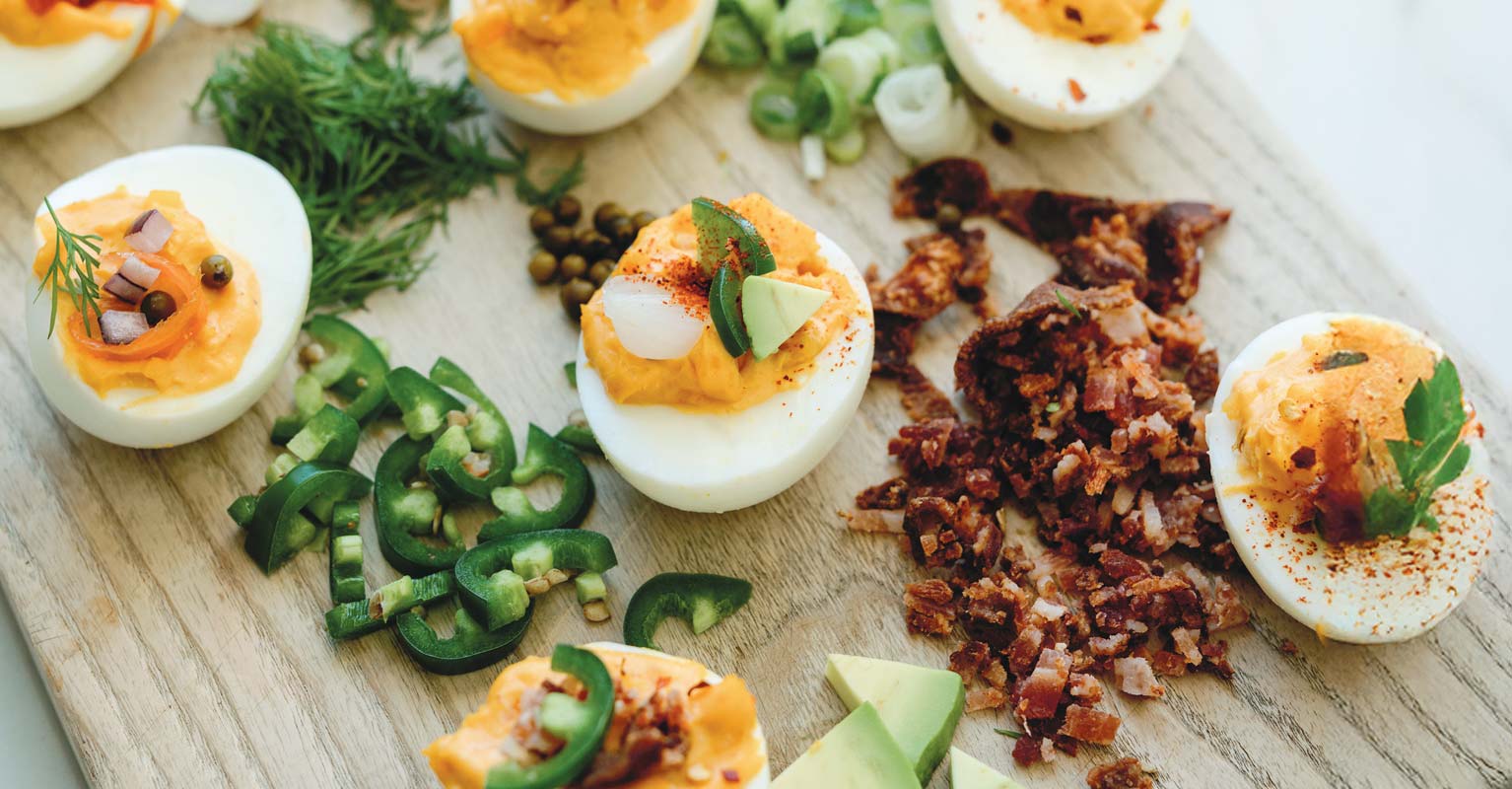Most of what I know about Great-Grandma B I’ve gleaned through a tome of her recipes handwritten in a careful cursive unfamiliar to my eye. They came to me spiral bound and in a rubber- banded stack of mismatched paper. Scattered throughout, she left little notes about what she deemed excellent or little work for great reward. One of her more peculiar notes was for her favorite drink: a mixture of egg yolks with sugar and lemon to taste served over ice and thinned with water.
Grandma B and I never met. She passed before my time, and while I was very close to her son— my grandfather, George—I never thought to ask him much about his own parents. All that was passed down to me collectively were visions of a stern, slightly scary, and very German matriarch. The kind with the superpower to always know if you touched the thing she explicitly told you not to in the fancy room of the house.
But in reading through her recipes, I’m getting to know a different side of her. Not softer, but I can see the caretaker she was, the strong enduring woman, and the sparks of ordinary joy it seems cooking for her family brought.
This is a first-generation German American’s version of the British classic Hot Cross Buns, traditionally served on Good Friday. I’ve updated it some, as it appears our foremothers knew a lot more about baking than we do now and didn’t need explanation of all the steps necessary to make a soft yeasted dough. Plus, the famous cross that gives these buns their name is, according to her directions, cut or sheared into the buns, which feels very unfussy and very German. I’ve added the more traditional flour paste piping method, but feel free to shear away as she did.
MAKES 12–16 BUNS
¼ ounce packet active dry yeast
1 teaspoon plus ½ cup sugar, divided
1 cup warm milk
¼ cup butter, cut into fourths
1 teaspoon salt
1 teaspoon cinnamon
¼ teaspoon allspice
2 eggs plus 1 additional egg for egg wash
3½ cups all-purpose flour (measured by spoon-and-knife method)
1 cup currants or raisins
Honey or jam for glazing (peach or apricot is great here)
For the piping:
3 tablespoons all-purpose flour
A little cold water
In the bowl of your stand mixer fitted with the hook attachment, combine yeast, the teaspoon of sugar, and warm milk. Stir to combine. Cover and let rest 5 minutes.
Add butter, remaining ½ cup of sugar, salt, cinnamon, allspice, 2 eggs, and 1½ cups fl our. Mix on low to combine, scraping down the sides as needed. Add the remaining 2 cups of flour and currants or raisins. Mix on medium until a slightly sticky and soft dough forms that is beginning to pull away from the sides of the bowl, about 2 minutes. If this doesn’t happen, add more flour 1 tablespoon at a time until the desired consistency is reached. Cover dough and let rest 5 minutes. Knead again on medium speed for 2 minutes, until smooth and elastic.
Lightly oil a bowl. Place dough in bowl and turn to coat. Cover and let rise until double in size, about 1–2 hours, depending on the temperature of your home. A good trick if you have a cold home is to place it in the unheated oven with the light on.
Place risen dough on a lightly floured work surface. Cut into even pieces, 12 (for fairly large buns) or 16 (for smaller buns). Roll each piece into a ball in your hands or on your work surface. Place buns in a greased 9- by 13-inch baking dish. Let rise until puff ed and relaxed, 1–2 hours more.
Brush egg wash on tops of buns. Next make the piping: Mix 3 tablespoons flour with enough cold water to form a thick paste. Place in a piping bag—or a zip-top bag with a corner cut off —and pipe a line down each row of buns. Repeat in the other direction to form crosses. Or do as Grandma B and cut a cross with your knife or scissors.
Bake at 350°F for 25–30 minutes, until golden brown. Immediately brush with warmed honey or jam as a glaze. Serve warm with a giant pat of butter.




